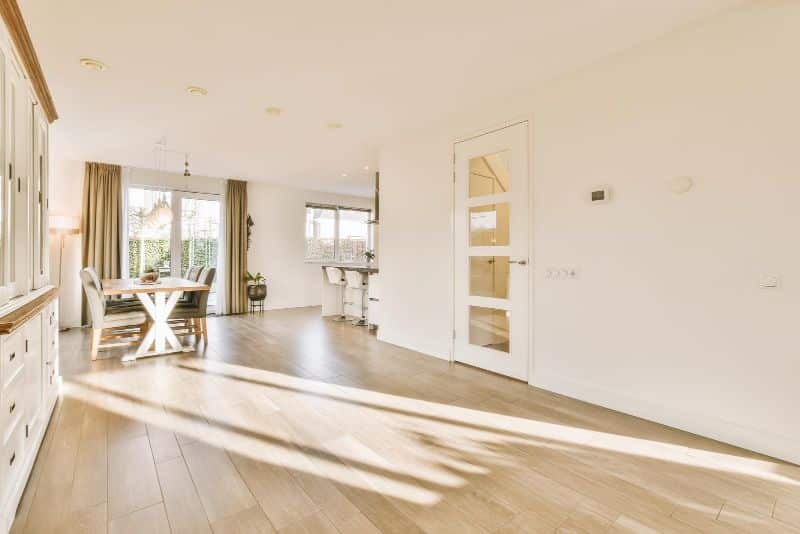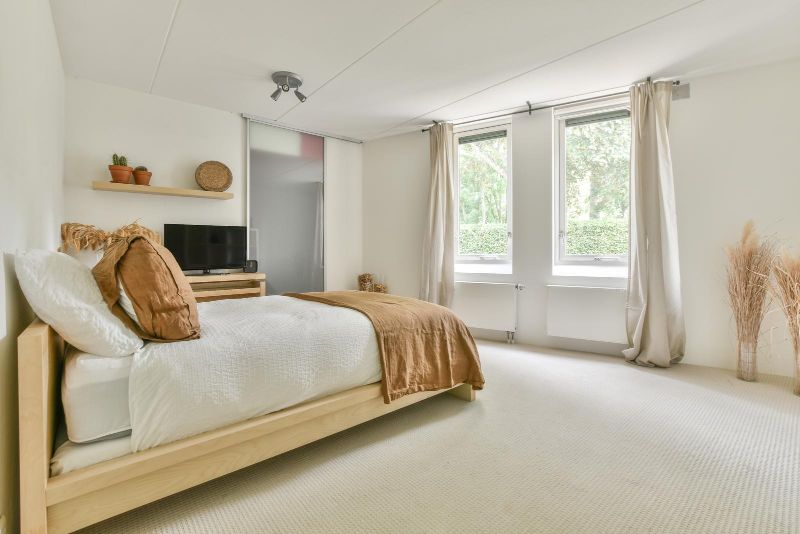Are you looking for ways to create a happier, healthier home life? We all know that the environment we live in can have tremendous impacts on our quality of life. To ensure your family is set up for success, one of the best investments you can make is investing in a well-designed home. A thoughtfully designed interior not only looks great but also helps improve family relationships and leads to less stress and more productivity.
In this blog post, we’ll discuss how paying attention to design details has positive benefits for everyone who lives there – from creating better sleeping conditions to helping with organization!

Utilize Natural Light
One of the key aspects of a well-designed home is the efficient utilization of natural light. Sunlight can have surprising effects on both our physical health and mood. It improves our sleep cycle, increases vitality, and helps to instill a sense of calm. To optimize natural light in your home, consider replacing older windows with newer models that are designed for maximum light penetration.
Modern window replacements also offer improved energy efficiency, which can reduce heating and cooling costs. People recommend working with local experts, whether that be a Scottsdale home window replacement company or a Miami installer, to ensure the correct model and application are used for your specific home. Just as we all have different tendencies, every home is unique in how it utilizes natural light.
Functional Spaces for Every Family Member
Another crucial aspect of a well-considered home design is creating functional spaces catered to each family member’s needs. A well-designed space can lead to increased productivity for remote workers and students, while a dedicated play area can stimulate creativity and learning for children. For those who value relaxation and tranquility, consider a quiet reading zone or an outdoor garden space that can serve as a personal retreat.
Remember, spaces that are tailored to individual preferences and interests foster independence and personal growth. Working with an experienced interior designer can help identify the best use of space in your home. Whether you reside in a compact apartment or a spacious house, there’s always the potential to customize and enhance your living environment to suit your family’s unique needs.
Creating a Comfortable and Inviting Atmosphere
A well-designed home should not only be functional but also provide comfort and warmth. This is achieved by creating an inviting atmosphere that makes everyone feel welcome and relaxed. Soft, neutral color palettes tend to elicit feelings of calm and relaxation. Incorporating natural elements like plants and wood can make a space feel more organic and grounded. Comfort can also be enhanced through the use of plush furnishings, cozy throws, and plenty of pillow cushions.
Setting the ambiance is greatly influenced by lighting. Dimmable lights allow for adjustable brightness levels to suit different times and moods. The placement of furniture also matters – a layout that encourages conversation and interaction can make a space feel more inclusive and social. Personal touches like family photos, art, and mementos can further enhance the homely feel. An inviting, comfortable home environment not only promotes well-being and happiness but also encourages family bonding and memorable moments.
Maximizing Organization and Efficiency
An organized home is synonymous with an efficient home. A well-planned layout can prevent clutter, and smart storage solutions can keep items neatly tucked away yet easily accessible. When every item has its place, you can save a lot of time wasted searching for things.
A well-designed kitchen, for instance, can streamline meal prep and cooking with strategically placed appliances, cabinetry, and countertops. In bedrooms, efficient use of closet space with the help of shelves, racks, and bins can make a world of difference in maintaining tidiness.
Don’t underestimate the potential of often ignored spaces like under the bed or corners of rooms – with the right furniture or storage solutions, these can turn into valuable storage real estate. Remember, organization is not a one-size-fits-all concept. What functions in one home might not function in another. The key is to assess your family’s needs and habits and design storage and organization solutions that are intuitive and sustainable for your specific lifestyle.

Promoting Family Bonding and Interaction
An aspect often overlooked in home design is its potential to promote family bonding and interaction. A well-thought-out home can create spaces that encourage family members to spend quality time together, strengthening familial relationships. The living room, for instance, can be designed as a versatile space where the family gathers for shared activities – be it watching movies, playing games, or simply conversing.
A dining area that accommodates the entire family not only serves the functional purpose of meal times but also becomes a venue for meaningful conversations and connection. An outdoor space, like a backyard or garden, provides opportunities for activities that everyone can participate in, from gardening to outdoor games.
In children’s rooms, consider creating spaces that parents can share with them, like a reading corner or an arts and crafts station. This not only promotes bonding but also allows parents to partake in their children’s development and growth.
Reducing Stress and Promoting Well-being
Designing a home that reduces stress and promotes overall well-being is integral to establishing a healthy and happy environment. The inclusion of calm and serene spaces—be it a small meditation corner, a home gym for daily workouts, or a private study for focused work—can significantly contribute to reducing stress levels. A well-placed indoor garden or a simple arrangement of indoor plants can also bring about a soothing ambiance, as greenery is known to have calming and stress-relieving effects.
Incorporating elements of nature into your home, such as natural materials, colors, and textures, can further enhance well-being, a concept known as biophilic design. Remember, natural light is a mood booster, so ensuring your home has an ample amount of it is vital for promoting well-being.
Don’t overlook the importance of good air quality. Ventilation systems, air purifiers, and certain indoor plants can contribute to cleaner air within your home. Lastly, personalizing spaces with items that evoke happy memories or symbolize peace and tranquility can create a haven that promotes relaxation, comfort, and ultimately, well-being.
In conclusion, a well-designed home is not only functional and aesthetically pleasing but also promotes family bonding, efficiency, and overall well-being. By incorporating elements of comfort, organization, and interaction into your design, you can create a space that fosters happiness and growth for yourself and your loved ones. Remember to consult with a professional designer to make the most out of your living environment.
